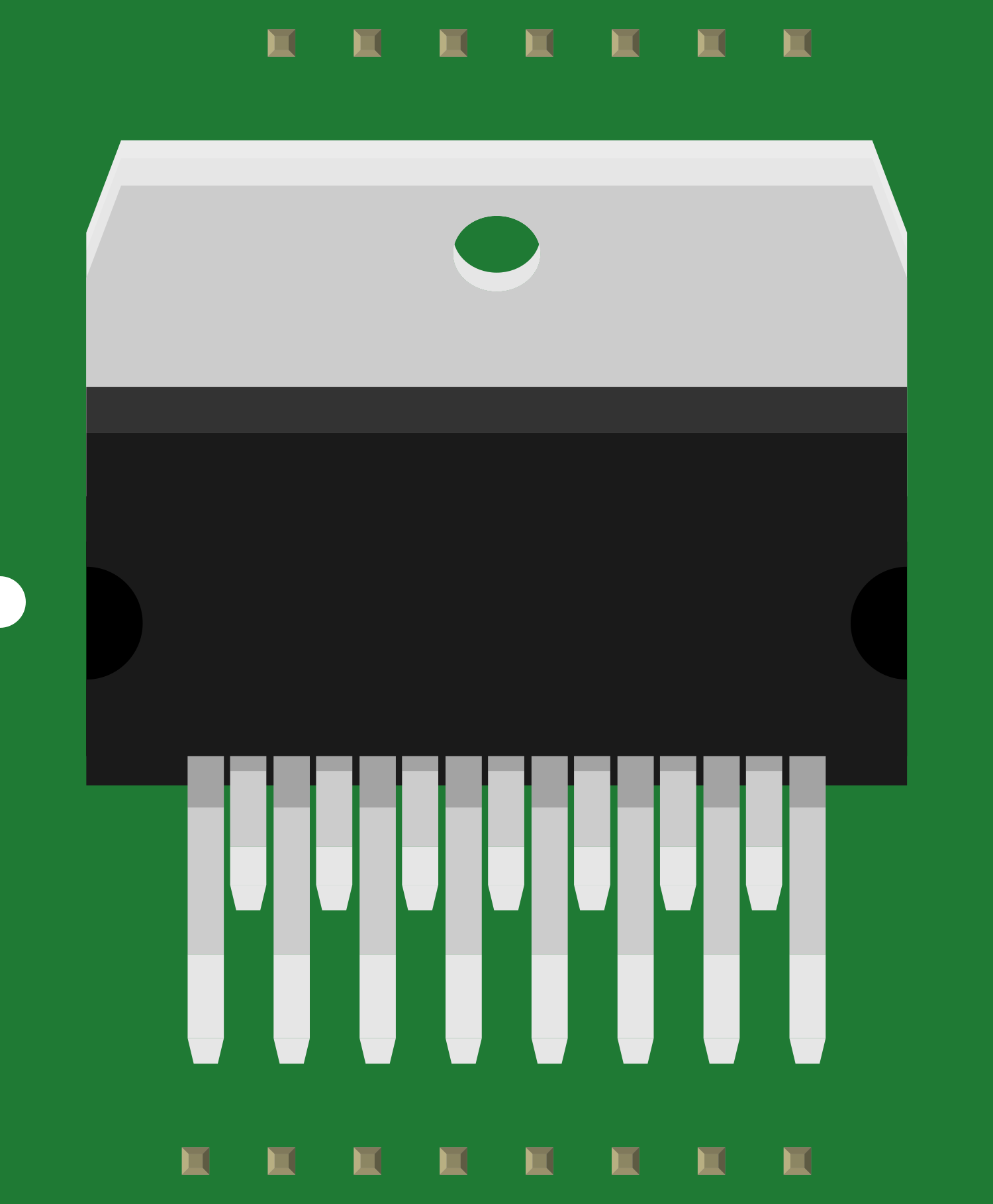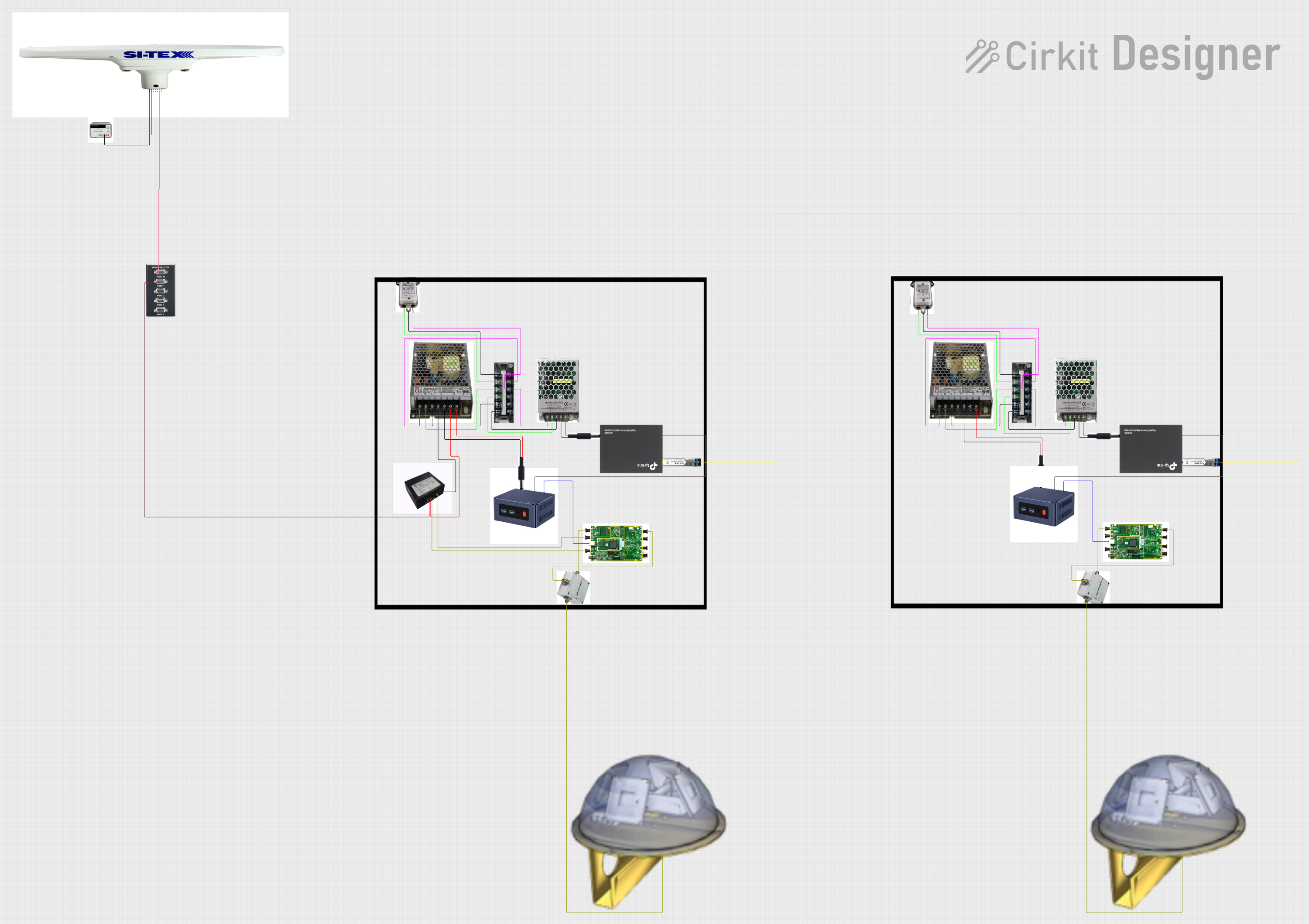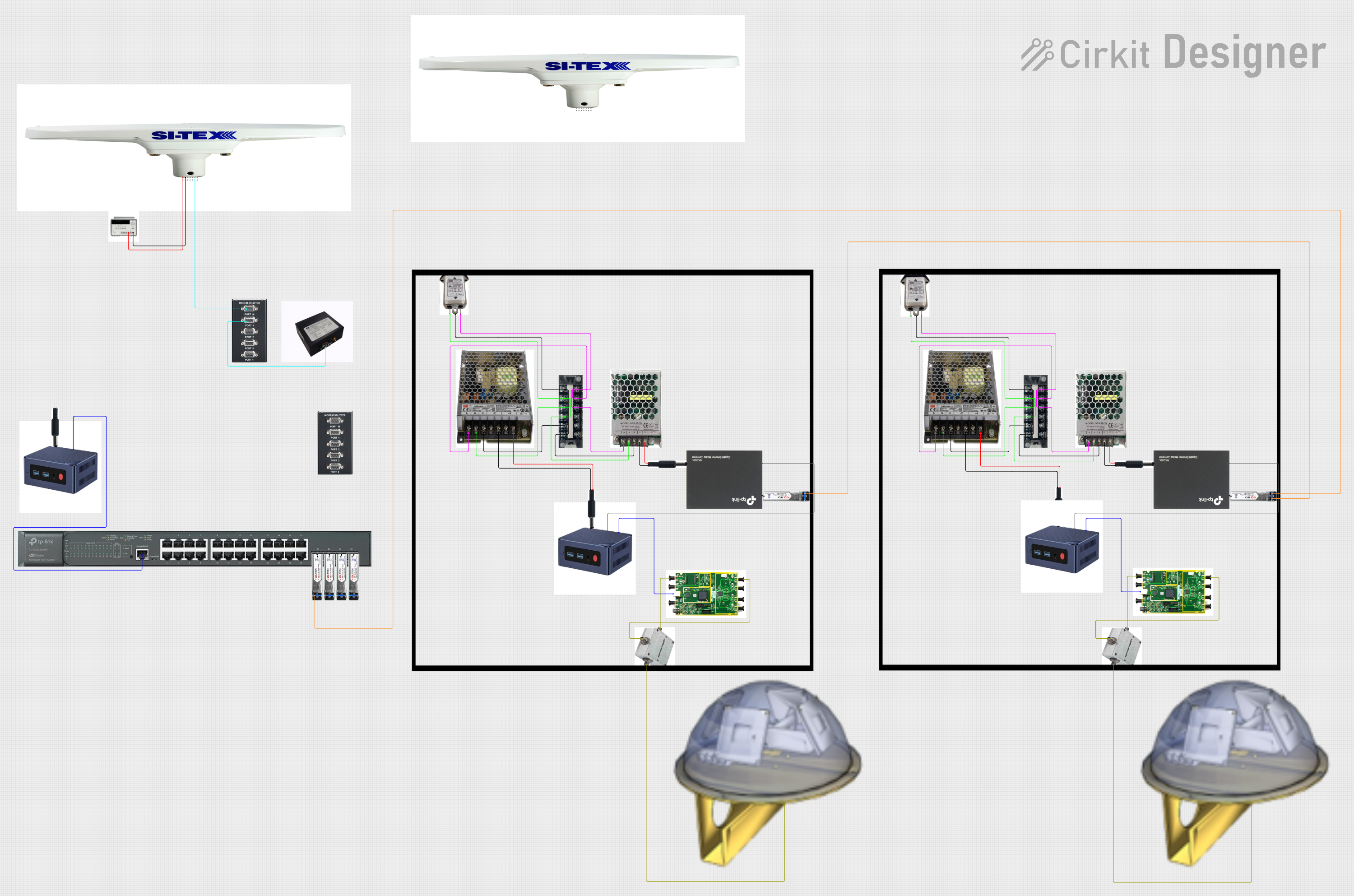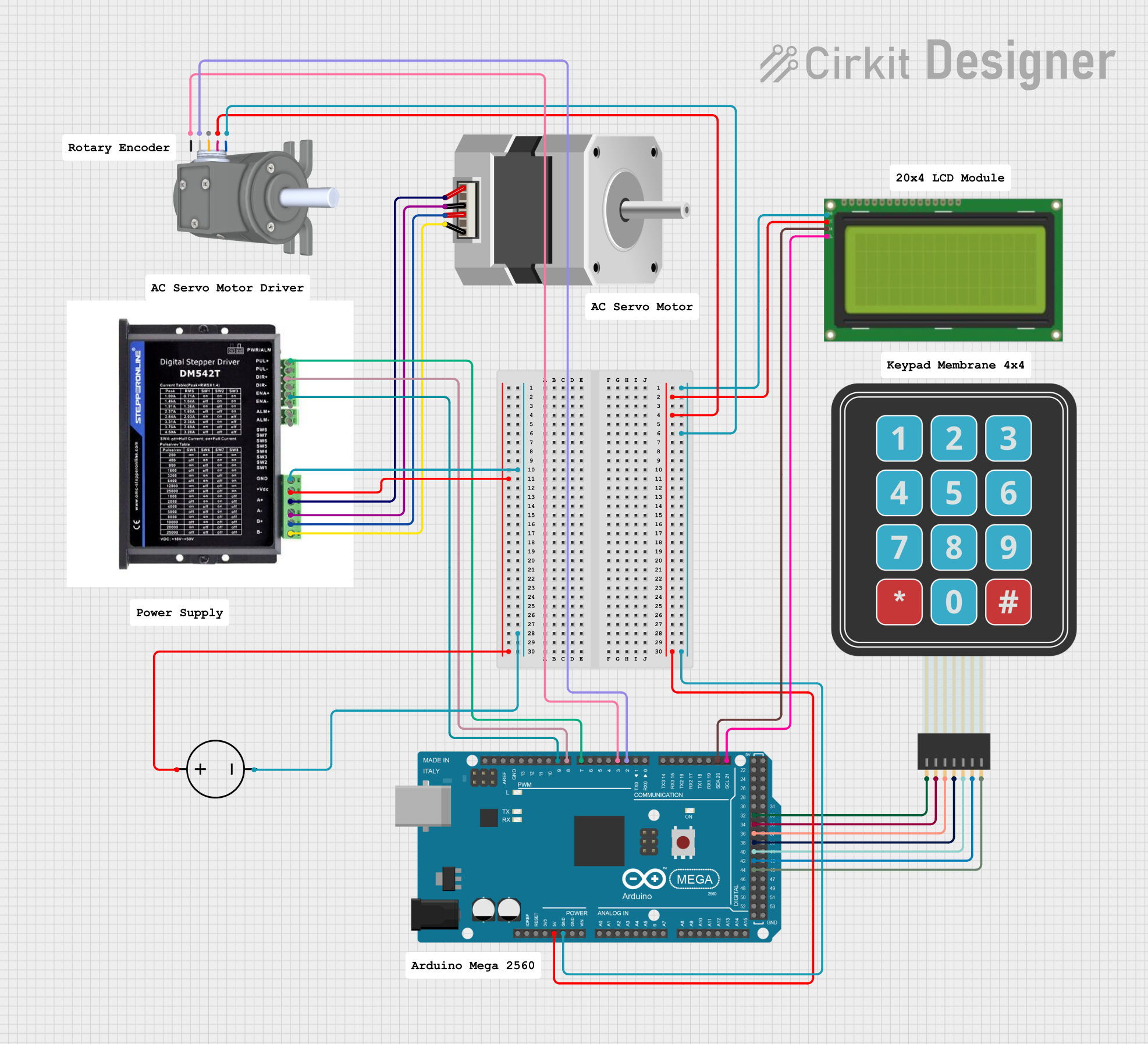
How to Use STA540: Examples, Pinouts, and Specs

 Design with STA540 in Cirkit Designer
Design with STA540 in Cirkit DesignerIntroduction
The STA540 is a monolithic quad half-bridge stage in Multiwatt15 package designed for audio amplification. It is capable of delivering up to 38W of continuous average power to an 8Ω load with less than 10% THD+N from a 22V supply, and 35W into 4Ω in single-ended mode. This component is widely used in applications such as mini component systems, self-powered speakers, and stereo amplifiers. Its high-quality audio amplification with low distortion and low power consumption makes it a popular choice for high-fidelity audio systems.
Explore Projects Built with STA540

 Open Project in Cirkit Designer
Open Project in Cirkit Designer
 Open Project in Cirkit Designer
Open Project in Cirkit Designer
 Open Project in Cirkit Designer
Open Project in Cirkit Designer
 Open Project in Cirkit Designer
Open Project in Cirkit DesignerExplore Projects Built with STA540

 Open Project in Cirkit Designer
Open Project in Cirkit Designer
 Open Project in Cirkit Designer
Open Project in Cirkit Designer
 Open Project in Cirkit Designer
Open Project in Cirkit Designer
 Open Project in Cirkit Designer
Open Project in Cirkit DesignerCommon Applications
- Mini component audio systems
- Self-powered speakers
- Stereo amplifiers
- Home theater systems
- Active loudspeakers
Technical Specifications
Key Technical Details
- Power Output: Up to 38W per channel into 8Ω at 22V supply
- Operating Voltage Range: 8V - 22V
- Standby Current: Max 80µA
- Signal-to-Noise Ratio: 100 dB (typical)
- Number of Channels: 4 (can be configured as 2 BTL channels)
Pin Configuration and Descriptions
| Pin Number | Pin Name | Description |
|---|---|---|
| 1 | OUT1 | Output of channel 1 |
| 2 | SVRR | Supply voltage rejection |
| 3 | IN1 | Input of channel 1 |
| 4 | ST-BY | Standby control pin (active low) |
| 5 | IN2 | Input of channel 2 |
| 6 | OUT2 | Output of channel 2 |
| 7 | GND | Ground reference |
| 8 | VCC | Supply voltage |
| 9 | OUT3 | Output of channel 3 |
| 10 | IN3 | Input of channel 3 |
| 11 | IN4 | Input of channel 4 |
| 12 | OUT4 | Output of channel 4 |
| 13 | BOOT4 | Bootstrap capacitor connection for channel 4 |
| 14 | BOOT3 | Bootstrap capacitor connection for channel 3 |
| 15 | D95V | Diagnostic output for 95V |
Usage Instructions
How to Use the STA540 in a Circuit
Power Supply: Ensure that the power supply voltage is within the specified range (8V - 22V). Exceeding the voltage range can damage the STA540.
Input Signal: Connect the audio input signal to the IN1 and IN2 pins for stereo operation. For bridge-tied load (BTL) configuration, use IN1/IN3 and IN2/IN4.
Output Connection: Connect the OUT1 and OUT2 pins to the speakers. Ensure that the speaker impedance matches the STA540's specifications.
Standby Mode: The ST-BY pin can be used to switch the STA540 into standby mode to save power. Connect this pin to ground to activate the amplifier.
Heat Dissipation: The STA540 can generate significant heat during operation. Ensure proper heat sinking to maintain thermal stability.
Best Practices
- Use decoupling capacitors close to the power supply pins to minimize power supply noise.
- Keep audio input lines as short as possible to reduce the risk of picking up interference.
- Ensure proper grounding to prevent hum and noise in the audio output.
- Use a proper filter at the output to prevent RF interference from affecting the audio signal.
Troubleshooting and FAQs
Common Issues
- No Sound Output: Check power supply connections, input signal presence, and speaker connections.
- Distorted Sound: Ensure that the input signal level is not too high, causing clipping. Also, check for proper power supply voltage and heat dissipation.
- Overheating: If the STA540 is overheating, improve heat sinking, check for short circuits, and ensure the load impedance is not too low.
Solutions and Tips
- Low Output Volume: Increase the input signal level or check for incorrect gain settings.
- Hum or Noise: Verify grounding and input signal shielding. Use decoupling capacitors as recommended.
- Intermittent Sound: Check for loose connections or cold solder joints.
FAQs
Q: Can the STA540 be used in a mono configuration? A: Yes, the STA540 can be configured in a mono Bridge-Tied Load (BTL) mode for higher power output.
Q: What is the standby current of the STA540? A: The standby current is typically around 80µA.
Q: How can I improve the sound quality of my amplifier using the STA540? A: Use high-quality input sources, ensure proper layout and grounding, and use appropriate filtering on the output.
Q: Is it necessary to use a heatsink with the STA540? A: Yes, due to the power dissipation during operation, a heatsink is recommended to maintain thermal stability.
For any further assistance or detailed application notes, please refer to the manufacturer's datasheet and application guidelines.